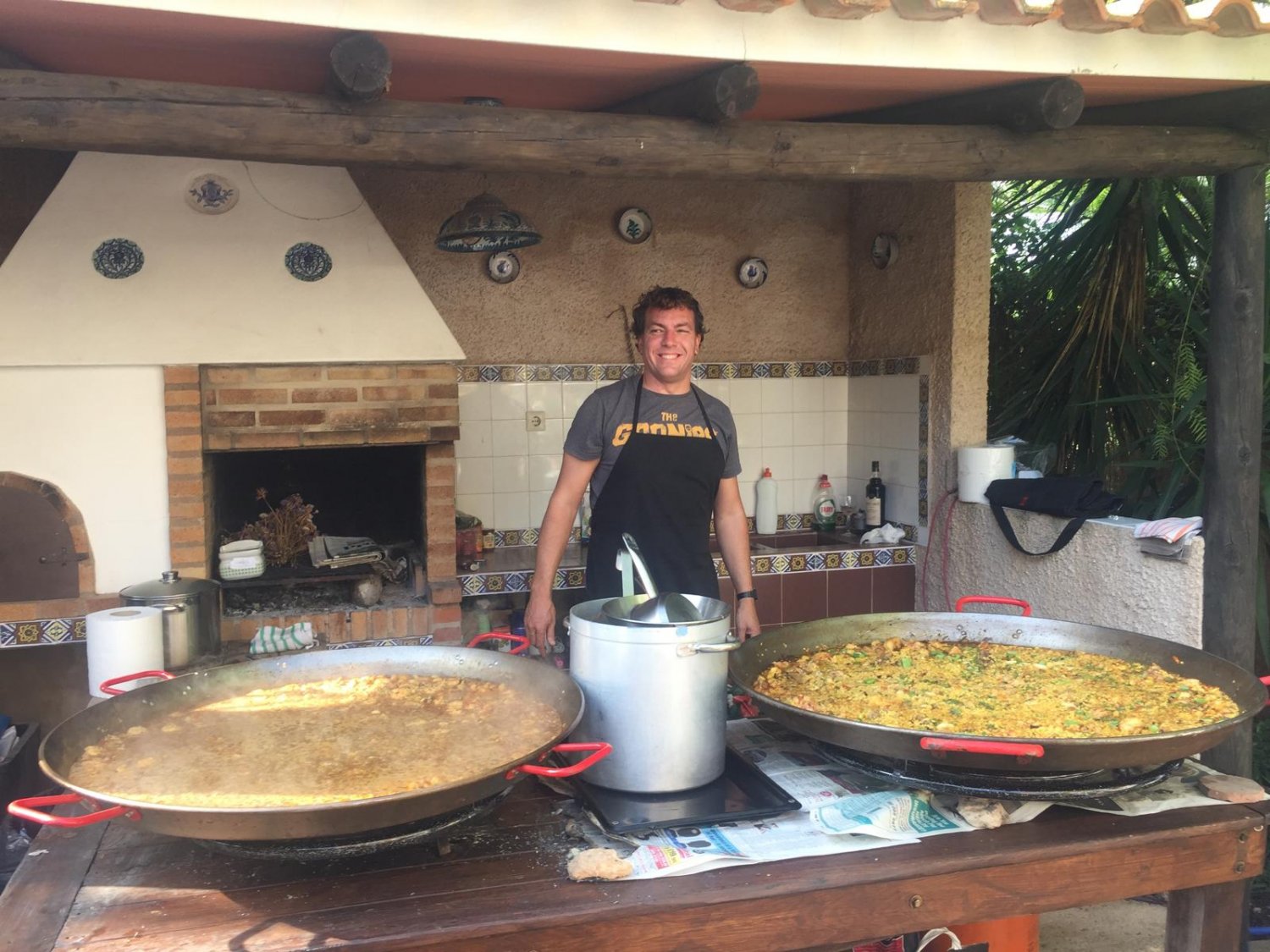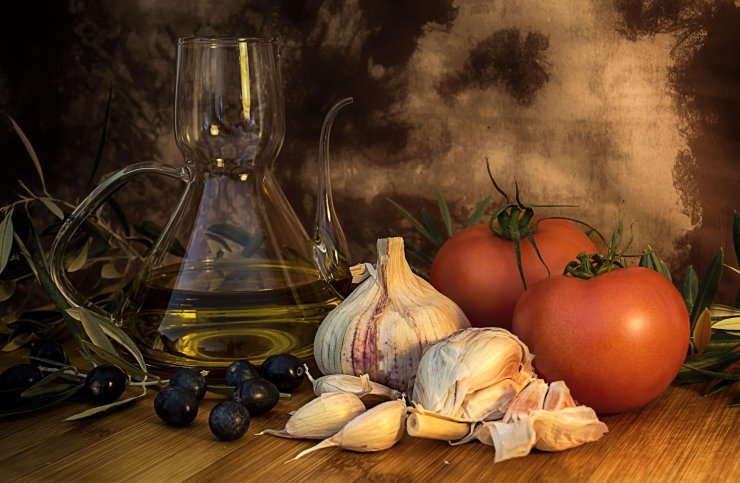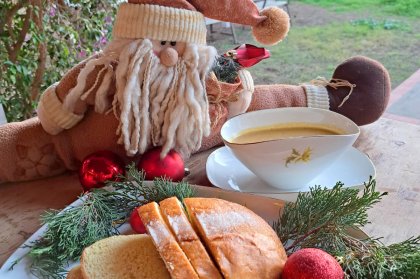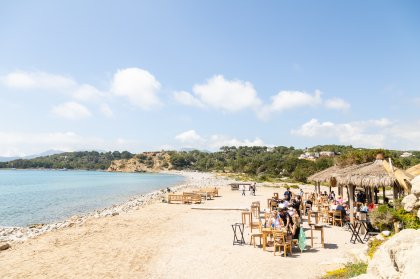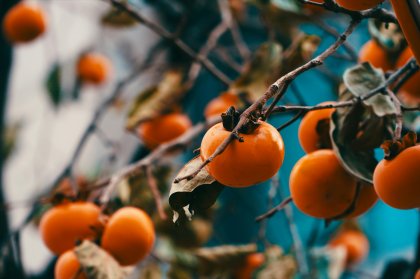Als Erinnerung an euren Urlaub auf Ibiza präsentieren wir euch heute ein klassisches spanisches Paella-Rezept mit Meeresfrüchten, zubereitet von Julián González, der in vielen führenden Restaurants auf Ibiza als Chefkoch tätig war. Ihr könnt ihn im Hoyo 19 im Golf Ibiza finden.
Puristen würden dieses Gericht in einer speziellen Pfanne namens Paellera zubereiten, und sowohl Julián als auch jeder Spanier würden dem zustimmen. Wenn keine vorhanden ist, verwendet ihr am besten die breiteste Bratpfanne, die ihr habt, da der Reis für den besten Geschmack in einer dünnen Schicht gekocht werden sollte. Nehmt einen Wok, wenn ihr keine solche Pfanne zur Hand habt. Das Ergebnis ist zwar vielleicht nicht so gut, ihr erzielt jedoch trotzdem alle köstlichen Aromen.
Juliáns Meeresfrüchte-Paella

Das Wichtigste bei der Zubereitung einer Paella ist eine gute Fischbrühe, auch Fumét genannt, die dem Reis Geschmack verleiht. Die Zubereitung einer traditionellen Paella erfolgt in drei Schritten in dieser Reihenfolge: Brühe zubereiten, Gemüse und Meeresfrüchte anbraten, das Sofrito, dann den Reis kochen. Fangen wir an.
Erster Schritt: Die Brühe zubereiten
Erhitzt einen Esslöffel natives Olivenöl oder eine Ölmischung in einer Pfanne und bratet die Garnelenköpfe. Fügt zwei Liter Wasser, den Seeteufel und die Gräten des Zackenbarsches hinzu und bringt all dies zum Kochen. Achtet darauf, den Schaum, der sich an der Oberfläche der Pfanne bildet, zu entfernen, bevor es kocht. Lasst die Brühe 30 Minuten lang bei guter Hitze köcheln und gießt sie dann in einen Krug. Wenn viel Flüssigkeit verdampft ist, füllt sie bis auf einen Liter nach und stellt sie beiseite.
Zweiter Schritt: Das Sofrito zubereiten
Erwärmt die Paellera, die große Bratpfanne oder den Wok bei mittlerer Hitze, gebt die frischen oder Dosentomaten, die gehackten Tintenfische, die gehackten grünen Paprika, den gehackten Knoblauch, einen Teelöffel Salz und drei bis vier Esslöffel Öl hinzu. Kocht alles 10 bis 15 Minuten lang und rührt dabei gelegentlich um, damit es nicht anbrennt.
Top-Tipp : Lasst die Tomate karamellisieren, um eurer Paella mehr Geschmack zu verleihen.
Dritter Schritt: der Reis
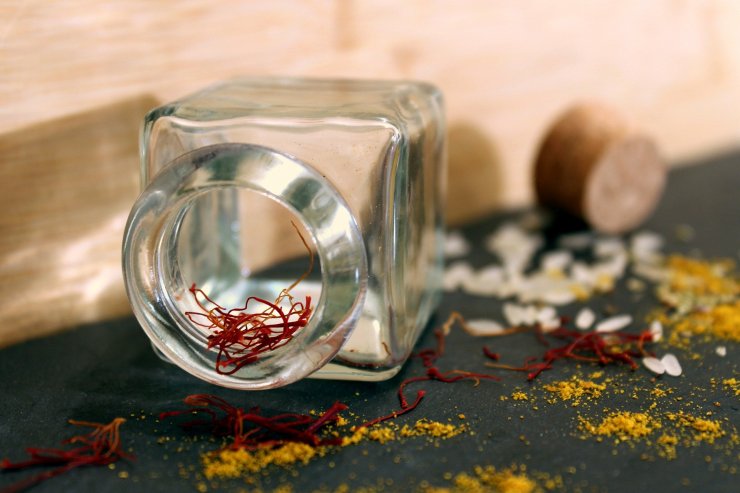
Lasst die Pfanne auf mittlerer Hitze und gebt den Reis, Safran (falls vorhanden) und Lebensmittelfarbe hinzu. Bratet dann alles kurz an, damit das Aroma erhalten bleibt. Gebt einen Liter der abgeseihten Brühe hinzu und rührt um. Gebt bei Bedarf mehr hinzu, wenn die Flüssigkeit schnell verdampft. Wenn ihr noch Brühe übrig habt, friert diese für einen anderen Tag ein.
Ihr müsst die Mischung mit möglichst wenig Rühren etwa 20 Minuten lang kochen, je nach verwendetem Reis. Wenn der Reis beginnt, sich am Boden anzusetzen, müsst ihr die Hitze reduzieren.
Probiert nach der Hälfte der Garzeit, ob die Paella genug gesalzen ist. Fügt bei Bedarf mehr Salz hinzu und gebt den Seeteufel, die Garnelen und die Krabbenbeine (oder die gefrorenen Meeresfrüchte) hinzu. Wenn ihr den Fisch und die Meeresfrüchte jetzt hinzufügt, vermeidet ihr, dass sie zu lange garen.
Sobald der Reis fertig ist, vom Herd nehmen, die gehackte Petersilie unterrühren und vor dem Servieren fünf Minuten stehen lassen.
Buen provencho! (Guten Appetit auf Spanisch).
Zutaten
Menge für vier Personen
- 200 Gramm Pflaumentomaten gewürfelt oder eine 400 Gramm Dose, den Saft abtropfen lassen
- 2 Knoblauchzehen, fein gehackt
- Eine halbe grüne Paprika, gehackt
- Ein paar Zweige Petersilie, gehackt
- 500 Gramm Paellareis (am besten „Bomba“) oder Risottoreis
- 1 Stück Tintenfisch, mit Haut für mehr Geschmack
- 8 Muscheln
- 8 ganze Garnelen
- 4 Krabbenbeine
- 300 Gramm Seeteufel, gehackt und ohne Gräten für die Brühe
- Salz
- 5 Fäden Safran
- 1 Teelöffel Paella-Farbe für die charakteristische gelbe Paella-Farbe – optional
- Natives Olivenöl (nicht Extra Nativ. Wenn dieses nicht verfügbar ist, ersetzt es durch eine Mischung aus zwei Dritteln Pflanzenöl und einem Drittel Extra Nativem Olivenöl für einen ähnlichen Geschmack)
- 2 Liter Wasser
Hinweis: Wenn ihr keinen frischen Fisch und keine frischen Meeresfrüchte bekommt, könnt ihr stattdessen eine 400-Gramm-Tüte mit gemischten Meeresfrüchten nehmen und statt der Fischbrühe Hühnerbrühe verwenden. Die Paella-Farbe verleiht der Paella ihre charakteristische gelbe Farbe, obwohl Safran auch funktionieren sollte, wobei die Farbe dann nicht so leuchtend ist.
Alternativ könnt ihr Julián unter der Telefonnummer +34 607 22 18 39 buchen, um eine köstliche Paella eurer Wahl von eurem Privatkoch in eurer Ferienvilla oder eurem Haus zubereiten zu lassen.
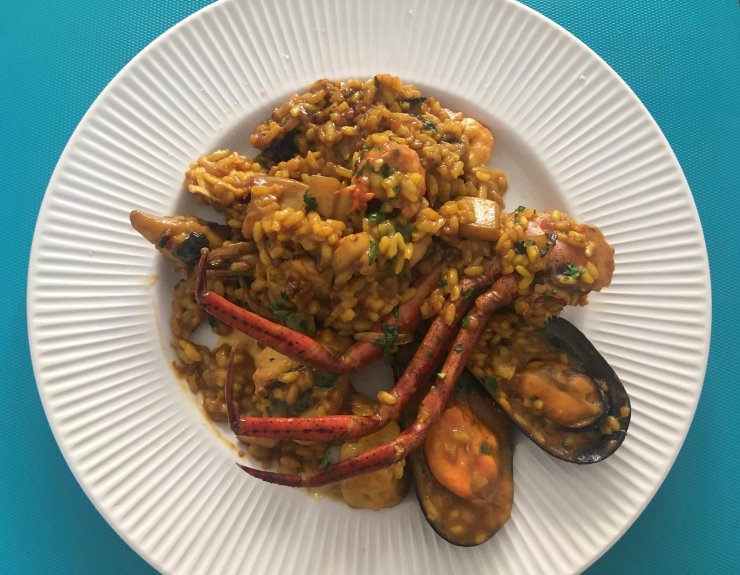
Eine spanische Tortilla zuzubereiten, ist ganz einfach. Lluc zeigt es euch in unserem Video.
Wenn ihr mehr über die Hauptgerichte erfahren möchtet, die die Ibizenker lieben (auf Englisch), lest unseren Artikel.
